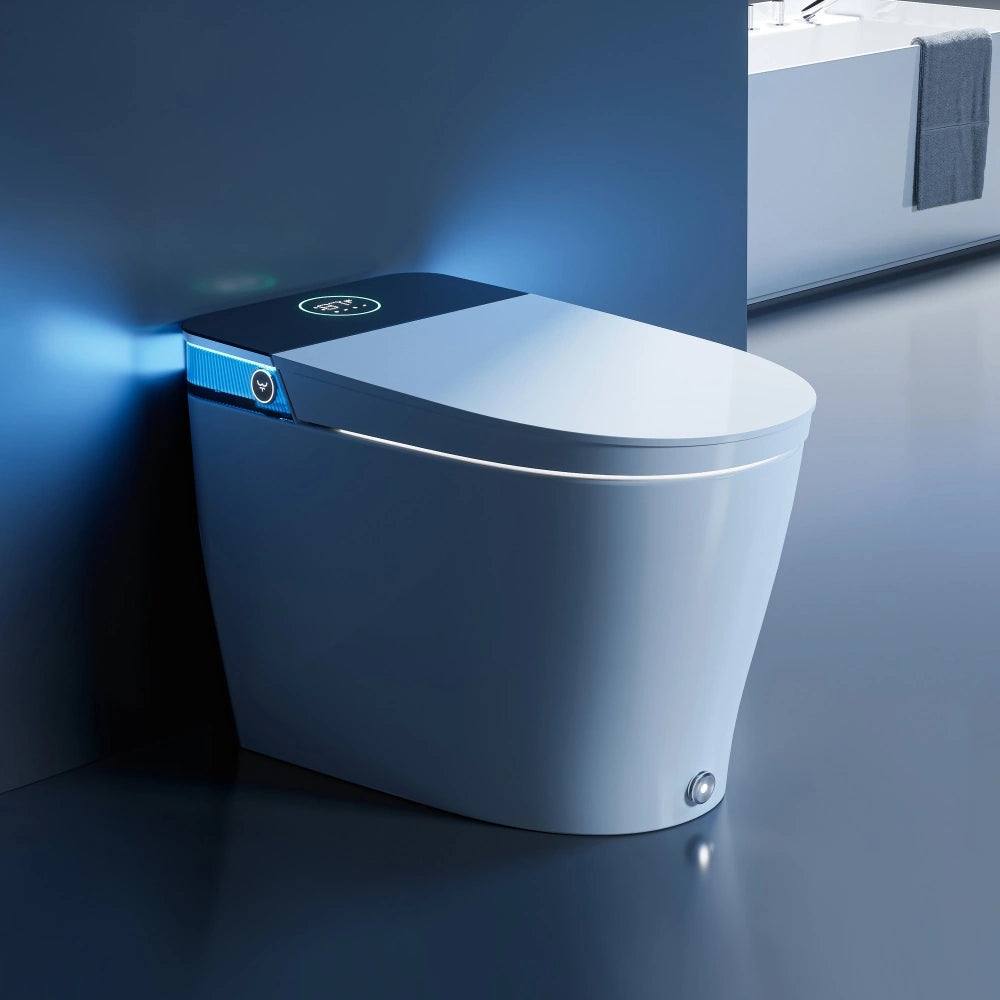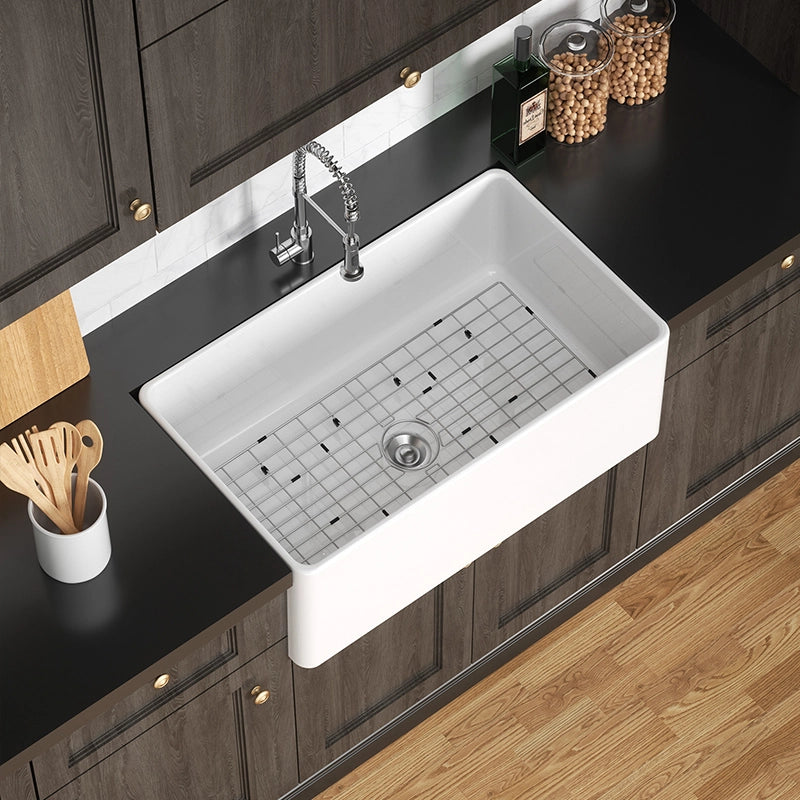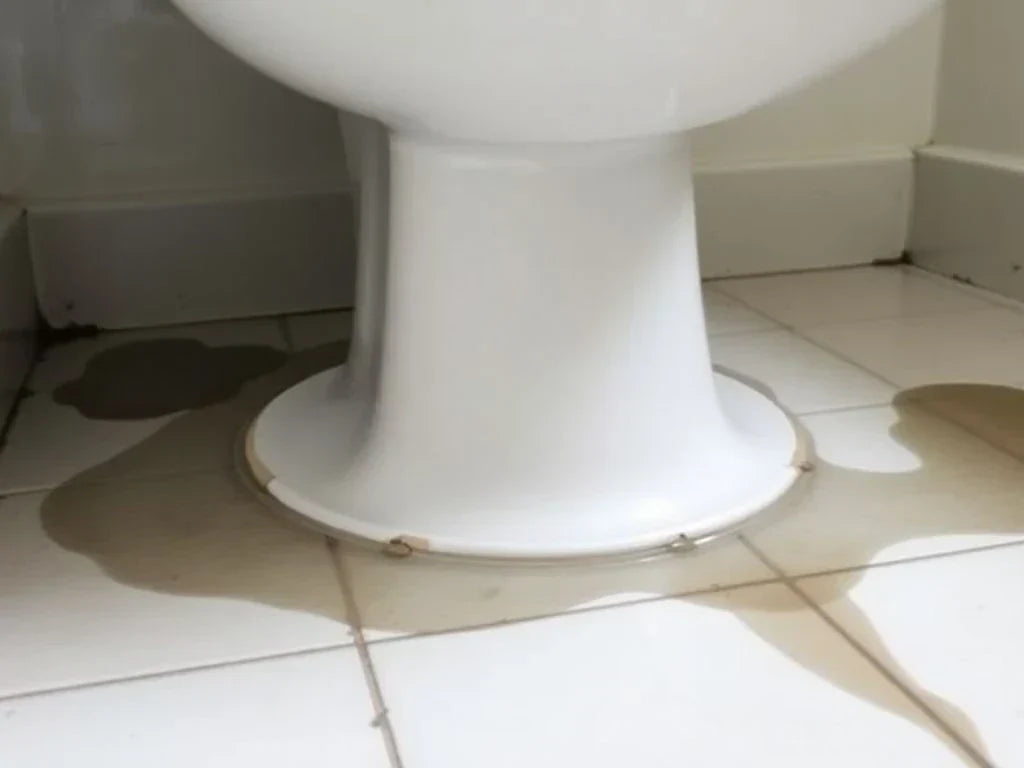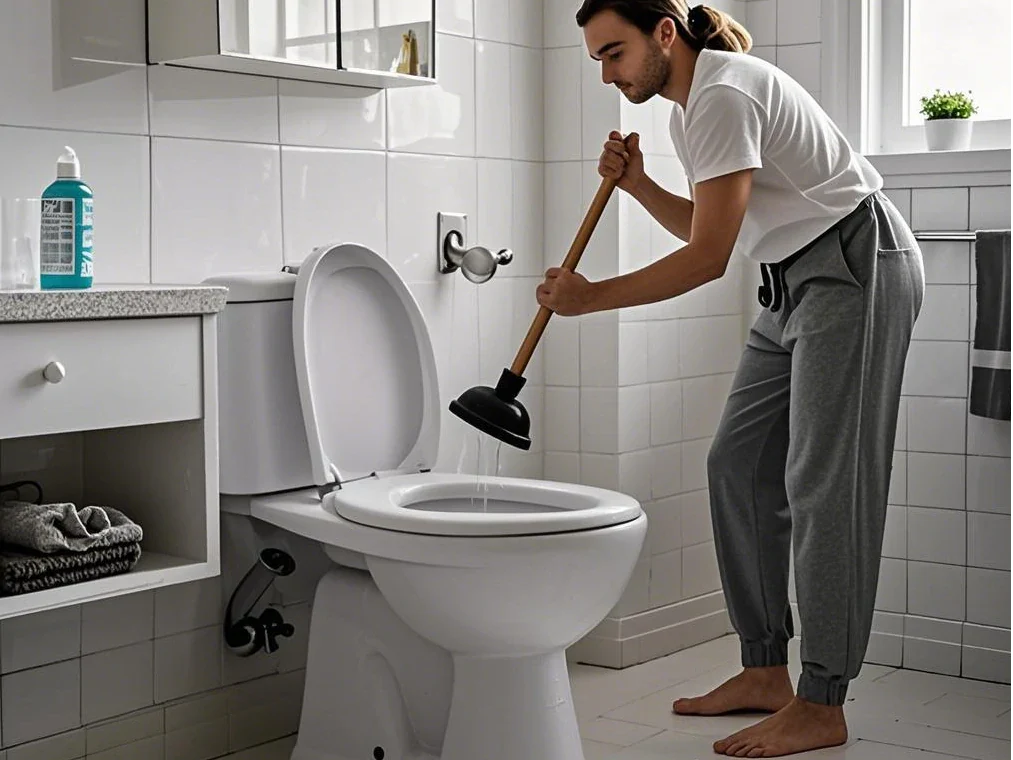Having trouble with weak flushing or too much water usage? You might need to adjust the toilet water level. Making these adjustments can make your toilet work better, save water, and prevent common problems. This guide will show you how to adjust water level in toilet bowl yourself, saving you money and time.
Knowing how to adjust water level in toilet bowl is key. By doing this simple task, you can fix issues like bad flushing and too much water. It helps your toilet work well and saves you from headaches.

The Importance of Proper Water Level
Effective Flushing
Effective flushing means the toilet clears waste with one flush. It depends on the water level in the bowl. A good water level stops waste from sticking around. This makes sure your toilet is clean and smells fresh.
Adjusting the float helps control this level for better flushing. Too much or too little water can cause problems. Just right, and you save water while keeping everything working great.
Prevent Overflow
To stop toilet overflows, keep an eye on the water level. A too high level can lead to spills during a flush. Knowing how to adjust water level in toilet bowl is essential to managing this risk. Also, make sure nothing blocks the flow of water into and out of the bowl. This step is key for preventing overflow problems.
Regular checks are good practice. They help you spot issues early, such as leaks or slow drains that might cause overflows later. Fix these problems quickly to keep your toilet running smoothly and avoid messy accidents.
Water Efficiency
how to adjust water level in toilet bowl is key for saving water. With correct settings, you waste less with every flush. This means lower water bills and less strain on the environment. A simple tweak can make a big difference in how much water your toilet uses.
A low-flow toilet can save thousands of gallons per year. Mastering how to adjust water level in toilet bowl can help reduce waste, ensuring each flush uses no more water than necessary. It's an easy step with a big impact on keeping our planet green.
Fine-tuning the float gets just enough water into the bowl to do its job without excess. That way, each flush is efficient, using no more water than necessary. It's an easy step with a big impact on keeping our planet green.
Hygiene and Odor Control
Keeping the right water level in your toilet bowl helps with cleanliness and smell. Too little water can lead to stains and wastes sticking around, causing bad smells. On the other hand, too much water might splash or not flush down waste properly.
So, Knowing how to adjust water level in toilet bowl makes sure everything goes down the first time. This keeps your bathroom smelling fresh.
Changing the float setting is a quick way to control this balance between too much and too little water. Keeping an eye on this will help stop odors before they start. A clean toilet also means fewer germs, making everyone healthier at home.
Troubleshooting Common Water Level Issues
Water Level Too High
Moving from identifying water level issues to addressing a high water level, this can cause several problems. A high water level in your toilet bowl may lead to spills and messes during flushes. It also wastes more water than needed, for each flush.
To fix this, Understanding how to adjust water level in toilet bowl is key. Lowering the float tells the fill valve, to shut off sooner, reducing the water amount that goes into the bowl. This simple step helps prevent overflow and saves on your water bill.
Water Level Too Low
A low water level in your toilet bowl can cause problems. It might not flush right and could lead to clogs or bad smells. To fix this, check the fill valve in the tank. This part controls how much water goes into the bowl after you flush.
Knowing how to adjust water level in toilet bowl by tweaking the fill valve is a simple way to solve this issue. Turn off the water supply first. Then, inside the tank, find and twist the adjustment screw on top of the fill valve. Turning it clockwise will raise the water level in your toilet bowl.
After making adjustments, turn on the water again and flush to test if it worked as expected.
Constant Running Water
Constant running water in a toilet can be annoying. It also wastes lots of water. This usually happens if the fill valve or flapper is not working right. The fill valve might need adjusting, or the flapper could be old and unable to seal properly.
Fixing constant running water saves money and helps the environment. Learning how to adjust water level in toilet bowl can help stop this from happening by adjusting the fill valve.
Making sure these parts work can stop the water from running non-stop. Check them often to avoid this problem.
Overflow Problems
Overflow problems in a toilet can lead to water spilling onto the floor. This happens if the water level is too high. A high water level might be due to a float that's set wrong. The float controls how much water stays in the tank.
Next, learn how to adjust water level in toilet bowl. This will help you fix overflow issues and more.

 How to Adjust the Water Level in the Toilet Bowl
How to Adjust the Water Level in the Toilet Bowl
Turn Off the Water Supply
Find the water valve near your toilet. It is usually on the wall or floor. Turn this valve clockwise to stop the water flow. This step makes sure your toilet does not fill up while you are working on it.
Turning off the water supply is like hitting pause. It gives you control. Now, there will be no new water coming into the tank. This way, you can adjust things inside without making a mess.
Remove the Toilet Tank Lid
Lift the lid off the toilet tank carefully. It's heavy and can break if dropped. Put it somewhere safe so it won't get damaged. This step is important for understanding how to adjust water level in toilet bowl.
Locate the Float Mechanism
After you remove the toilet tank lid, you will see the float mechanism inside. This part controls the water level in your toilet bowl. The float goes up and down with the water level, telling the valve when to stop letting more water in.
Usually, it looks like a ball floating on top of the water or a cylinder along a vertical pole. Each type adjusts differently but both aim to keep your toilet running well by managing how much water is in the tank.
Adjust the Float
To adjust the float, you first need to locate it in the toilet tank. It's usually a ball that floats on top of the water or a cylinder along the side. If your water level is too low, gently push down on the arm connecting the float to allow more water into the bowl. For too much water, lift this arm slightly to let less water fill up. Mastering how to adjust water level in toilet bowl helps control how much water fills your toilet.
Test the Adjustment
After adjusting the float to change the water level in your toilet bowl, it's time to check if it worked. Turn on the water supply and watch how the water fills up. It should stop at your desired level.
If not, you might need to adjust the float a bit more.
Testing helps make sure your toilet flushes right and saves water. If everything looks good, your job is done. Keep an eye out for any leaks or running water sounds, which mean you may have to tweak things again.
Fine-Tune the Settings
Once you adjust the float, check the water level again. It might need a bit more tweaking to get it just right. Turn the adjustment screw or slide on the float mechanism. This makes the water stop at your perfect level.
Now, flush the toilet to see if it fills up as you want. Keep adjusting until you're happy with how much water is in the bowl and tank.
Reassemble and Restore Water Supply
Put the toilet tank lid back on. Turn the water supply back on. Watch to make sure everything works right. If you need to, adjust again for perfect flush.
Keep an eye on the bowl's water level. Make small changes if needed. This helps keep your toilet working well and saves water too.
Preventative measures for maintaining water levels
Regular Inspections
Check your toilet often to avoid problems. Look at the water level and check for leaks. This keeps your toilet working well. Fixing small issues early can save you from big repairs later.
Make it a habit to inspect after cleaning or any time you notice changes in flushing.
Replacing old parts during inspections helps too. Over time, things like the flapper or fill valve wear out. If these are not working right, your toilet might not flush well or could leak. Changing these parts when they show wear keeps everything running smoothly.
Replacing Worn Parts
After checking your toilet regularly, you might find some parts are old or broken. It's time to replace them to keep the water level right and avoid problems. For example, if the float or flapper in your toilet is not working well, it can cause too much or too little water in the bowl.
Go to a store and get new parts that fit your toilet model. Changing these pieces can stop leaks, save water, and make sure your toilet flushes correctly.
Putting in new parts also helps you control the water level better without using outside tools. If you know how to adjust water level in toilet bowl after replacing it, you can raise or lower the water level easily.
This means less trouble with overflowing or running toilets. Plus, changing worn-out parts now saves money and effort later on by preventing bigger repairs.
Cleaning the Tank
Once you've replaced any worn parts, it's time to clean the tank. This step helps maintain water levels and keeps your toilet running smoothly. Start by turning off the water supply to your toilet.
Then flush it to drain most of the water from the tank. Use a sponge or cloth to wipe down the inside of the tank. Remove any dirt or grime that might affect how parts work.
Cleaning also stops bad smells and bacteria from growing in stagnant water. For a deep clean, you can use vinegar or a mild cleaner designed for toilets. Pour it into the tank, let it sit for a few hours, then scrub with a brush if needed.
This keeps everything working right and helps prevent future problems with water levels in your toilet bowl.
Proper Flushing Habits
To keep your toilet working well, only flush pee, poop, and toilet paper. Flushing other things can cause clogs and harm the system. Use enough water to clear the bowl when you flush. Too little water won't clean it well.
Check what you flush to avoid problems. Things like wipes, even if they say "flushable," should not go down the toilet. They don't break down like toilet paper and can block pipes.
Always choose flushing that matches what is in the bowl to prevent overflow or damage.
HOROW Modern Toilet Technologies for Better Water Level Management
As we finish this guide on the perfect flush, let's explore HOROW's innovative solutions. They offer top-notch water level management. HOROW has changed the features like automatic water level adjustments to solve the problem of how to adjust water level in toilet bowl more efficiently.
HOROW toilets stand out with their built-in overflow protection. This keeps the water level in the tank just right, avoiding messes and saving water. With these features, you can relax, knowing your toilet is taken care of.
If you want to upgrade your bathroom, check out HOROW's products. They offer convenience and efficiency, making life easier. Visit their official site to see how HOROW can improve your bathroom experience.
HOROW T37

The HOROW T37 toilet excels, in adjusting the water level, offering users the flexibility, to customize it according to their needs. Its intelligent design includes multiple flushing modes, allowing easy adjustments, to the water level, optimizing each flush, and minimizing water waste. With precise flush control, the T37 prevents common issues, like too high or too low water levels found in traditional toilets.
Additionally, the HOROW T37 features a five-position spray bar and adjustable water temperature, ensuring that not only is the water level optimal but also the user experience is comfortable. Whether using automatic flushing or manual adjustments, the T37 provides efficient control over how to adjust water level in toilet bowl, ensuring every use is both effective and water-saving.
HOROW T05

The HOROW T05 smart toilet stands out, for its advanced water level adjustment capabilities. Unlike other models, the T05's design ensures precise control over water levels in the bowl, contributing to efficient flushing and water conservation. This feature, combined with its intuitive remote control, allows users to easily customize their water levels according to their preferences.
With the T05's user-friendly features, you can solve the problem of how to adjust water level in toilet bowl, ensuring a consistent and hygienic flush every time. The integration of this smart water level management system provides both convenience and efficiency, making it a top choice for those looking to optimize their bathroom experience.
HOROW T30

The HOROW T30 intelligent toilet presents a non-electric structure that allows convenient management of water pressure. A crucial aspect to consider when determining the appropriate water level, in toilet bowls. Featuring dual spray heads for cleaning experiences without the need for electricity makes it a green and efficient choice, for any bathroom setting.
Moreover, the T30 comes with flushing choices such, as a hands foot operated flush and a side handle for manual operation. This setup provides a sanitary and user-friendly experience allowing for adjustments, in water pressure that can indirectly impact the bowl's water level ensuring efficient and personalized flushing.
HOROW T38

The HOROW T38 smart toilet comes with functions that improve user experience by providing options, for solving the problem of how to adjust water level in toilet bowl effectively. The integrated water tank guarantees flushing performance with inadequate water pressure settings. The pre-wet function optimizes each flush, for a more efficient operation.
The T38 provides users with four flushing options to choose from. Automatic flush, after standing up a foot kick button, a knob, and remote control. Allowing for flexibility, in adjusting water levels according to preferences. Additionally, the ability to customize water temperature and pressure settings adds to the efficient flushing experience offered by this model.
FAQ
1. What does adjusting the water level in a toilet bowl mean?
Adjust the water level in a toilet bowl by changing how much water stays in the bowl after flushing.
2. Why might I need to adjust my toilet's water level?
You may have to change the water level of your toilet if it's too low or high as it can lead to problems such, as flushing or overflowing.
3. How can I adjust the water level in my toilet bowl?
To adjust the water level, find and turn a screw on your fill valve - turning it clockwise will raise the level while counterclockwise lowers it.
4. Does adjusting my toilet's water level require professional help?
No, with a few tools and following some simple instructions, you can easily regulate the water levels in your toilet by yourself without having to call in a professional, for assistance.








Leave a comment
This site is protected by hCaptcha and the hCaptcha Privacy Policy and Terms of Service apply.